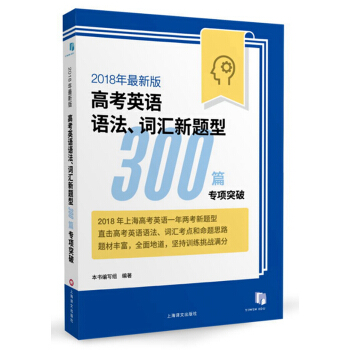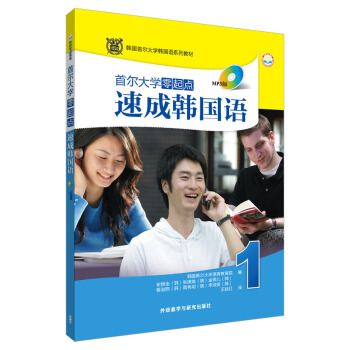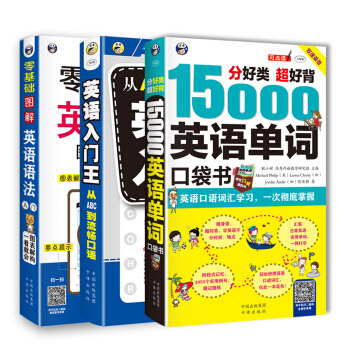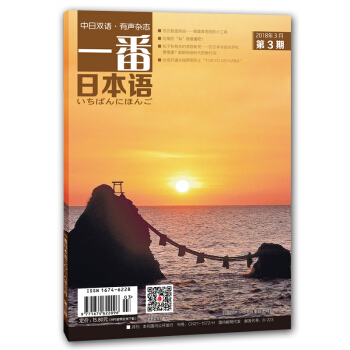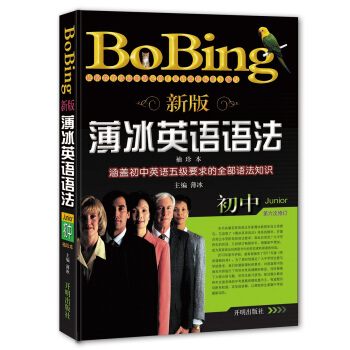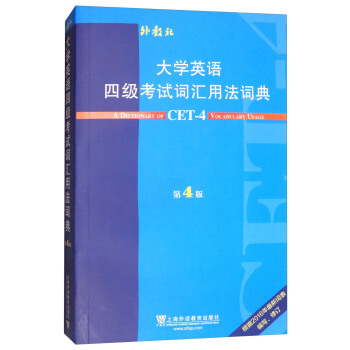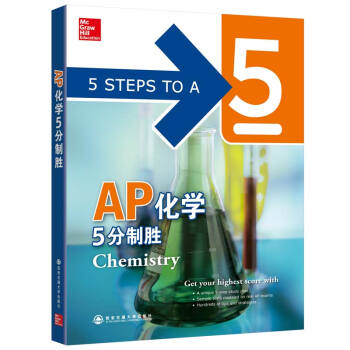

具體描述
産品特色
內容簡介
本係列AP考試叢書引進自美國知名教育齣版公司McGraw-Hill Education,由AP考試相關領域專傢編寫,是美國本土大學課堂使用教材,可以幫助考生提前適應全英學習模式。
《AP化學5分製勝》緊扣考試命題特點,以“五步”方案為學習框架,囊括與考試相關的學科要點。同時,還精選針對性練習以及全真模擬試題,配以準確答案和詳盡解析,利於考生鞏固所學。此外,考生還可在App Store中搜索“AP Planner”免費下載App,量身定製個性化學習日程。
內頁插圖
目錄
STEP 1 Set Up Your Study Program
1 What You Need to Know About the AP Chemistry Exam, 3
Background of the Advanced Placement Program, 3
Who Writes the AP Chemistry Exam? 4
The AP Grades and Who Receives Them, 4
Reasons for Taking the AP Chemistry Exam, 4
Questions Frequently Asked About the AP Chemistry Exam, 5
2 How to Plan Your Time, 9
Three Approaches to Preparing for the AP Chemistry Exam, 9
Calendar for Each Plan, 11
STEP 2 Determine Your Test Readiness
3 Take a Diagnostic Exam, 17
Getting Started: The Diagnostic Exam, 18
Answers and Explanations, 28
Scoring and Interpretation, 32
STEP 3 Develop Strategies for Success
4 How to Approach Each Question Type, 35
Multiple-Choice Questions, 35
Free-Response Questions, 38
STEP 4 Review the Knowledge You Need to Score High,
5 Basics, 45
Units and Measurements, 46
Dimensional Analysis—The Factor Label Method, 47
The States of Matter, 48
The Structure of the Atom, 48
Periodic Table, 52
Oxidation Numbers, 55
Nomenclature Overview, 55
Experimental, 61
Common Mistakes to Avoid, 61
Review Questions, 62
Rapid Review, 67
6 Reactions and Periodicity, 69
AP Exam Format, 70
General Aspects of Chemical Reactions and Equations, 70
General Properties of Aqueous Solutions, 71
Precipitation Reactions, 72
Oxidation–Reduction Reactions, 73
Coordination Compounds, 77
Acid–Base Reactions, 78
Experimental, 82
Common Mistakes to Avoid, 82
Review Questions, 83
Rapid Review, 86
7 Stoichiometry, 88
Moles and Molar Mass, 89
Percent Composition and Empirical Formulas, 89
Reaction Stoichiometry, 91
Limiting Reactants, 92
Percent Yield, 93
Molarity and Solution Calculations, 94
Experimental, 95
Common Mistakes to Avoid, 95
Review Questions, 95
Rapid Review, 101
8 Gases, 102
Kinetic Molecular Theory, 103
Gas Law Relationships, 104
Experimental, 112
Common Mistakes to Avoid, 113
Review Questions, 114
Rapid Review, 118
9 Thermodynamics, 120
Calorimetry, 121
Laws of Thermodynamics, 123
Products Minus Reactants, 123
Thermodynamics and Equilibrium, 127
Experimental, 128
Common Mistakes to Avoid, 128
Review Questions, 129
Rapid Review, 133
10 Spectroscopy, Light, and Electrons, 134
The Nature of Light, 134
Wave Properties of Matter, 136
Atomic Spectra, 136
Atomic Orbitals, 137
Photoelectron (Photoemission) Spectroscopy (PES), 138
Experimental, 139
Common Mistakes to Avoid, 139
Review Questions, 139
Rapid Review, 142
11 Bonding, 144
Lewis Electron-Dot Structures, 145
Ionic and Covalent Bonding, 145
Molecular Geometry—VSEPR, 149
Valence Bond Theory, 151
Molecular Orbital Theory, 153
Resonance, 154
Bond Length, Strength, and Magnetic Properties, 155
Experimental, 155
Common Mistakes to Avoid, 155
Review Questions, 156
Rapid Review, 159
12 Solids, Liquids, and Intermolecular Forces, 162
Structures and Intermolecular Forces, 163
The Liquid State, 164
The Solid State, 165
Phase Diagrams, 167
Relationship of Intermolecular Forces to Phase Changes, 169
Experimental, 169
Common Mistakes to Avoid, 169
Review Questions, 169
Rapid Review, 172
13 Solutions and Colligative Properties, 173
Concentration Units, 174
Electrolytes and Nonelectrolytes, 177
Colligative Properties, 177
Colloids, 181
Experimental, 182
Common Mistakes to Avoid, 182
Review Questions, 182
Rapid Review, 186
14 Kinetics, 188
Rates of Reaction, 189
Integrated Rate Laws, 192
Activation Energy, 193
Reaction Mechanisms, 194
Catalysts, 195
Experimental, 195
Common Mistakes to Avoid, 196
Review Questions, 197
Rapid Review, 201
15 Equilibrium, 203
Equilibrium Expressions, 205
Le Chatelier’s Principle, 206
Acid–Base Equilibrium, 207
Buffers, 215
Titration Equilibria, 216
Solubility Equilibria, 220
Other Equilibria, 222
Experimental, 222
Common Mistakes to Avoid, 223
Review Questions, 223
Rapid Review, 229
16 Electrochemistry, 231
Redox Reactions, 232
Electrochemical Cells, 232
Quantitative Aspects of Electrochemistry, 237
Nernst Equation, 239
Experimental, 240
Common Mistakes to Avoid, 240
Review Questions, 241
Rapid Review, 245
17 Nuclear Chemistry, 247
Nuclear Reactions, 247
Nuclear Stability, 249
Nuclear Decay Calculations, 250
Mass–Energy Relationships, 251
Common Mistakes to Avoid, 252
Review Questions, 252
Rapid Review, 254
18 Organic Chemistry, 255
Alkanes, 256
Structural Isomerism, 258
Common Functional Groups, 259
Macromolecules, 261
Experimental, 261
Common Mistakes to Avoid, 261
Review Questions, 262
Rapid Review, 265
19 Experimental Investigation, 266
Experiment 1: Spectroscopy, 267
Experiment 2: Spectrophotometry, 270
Experiment 3: Gravimetric Analysis, 271
Experiment 4: Titration, 272
Experiment 5: Chromatography, 273
Experiment 6: Determination of the Type of Bonding in Solid Samples, 274
Experiment 7: Stoichiometry, 275
Experiment 8: Redox Titration, 276
Experiment 9: Chemical and Physical Changes, 277
Experiment 10: Kinetics, 278
Experiment 11: Rate Laws, 279
Experiment 12: Calorimetry, 280
Experiment 13: Chemical Equilibrium—Le Chatelier’s Principle, 280
Experiment 14: Acid-Base Titrations, 281
Experiment 15: Buffer pH, 282
Experiment 16: The Capacity of a Buffer, 282
Common Mistakes to Avoid, 283
Review Questions, 283
Rapid Review, 285
STEP 5 Build Your Test-Taking Confidence
AP Chemistry Practice Exam 1, 289
AP Chemistry Practice Exam 2, 317
Appendixes
SI Units, 347
Balancing Redox Equations Using the Ion-Electron Method, 349
Common Ions, 353
Bibliography, 356
Web Sites, 357
Glossary, 358
Avoiding “Stupid Mistakes” on the Free-Response Section, 367
Exam Resources, 369
前言/序言
AP項目(Advanced Placement Program)始於1955年,由美國大學理事會(the College Board)主持,是在高中階段開設的具有大學水平的課程,即大學預修課程。AP項目目前設有34門課程和考試,它可以使有餘力、有能力、成績優秀的高中生有機會先修部分美國大學基礎課程以獲得大學學分,因此吸引瞭很多成績優秀的學生選修。目前,已有60多個國傢的幾韆所大學把AP學分作為其入學參考標準,其中包括哈佛大學、耶魯大學、牛津大學、劍橋大學等世界知名大學。
美國每年約有200萬高中畢業生,他們都要參加美國高考SAT和AP課程的考試。美國高中生會在11年級時完成SAT考試,在12年級(高中最後一年)完成兩件大事:第一,根據SAT的考試成績申請大學和奬學金;第二,選修AP課程,並進行備考。在高中選修AP課程和通過AP考試不僅是對學生能力和學業水平的證明,還可以使學生:1. 在申請大學時具有很大的優勢。美國大學把學生在AP考試中的錶現作為衡量其是否能夠勝任大學學習的依據。從美國大學錄取顧問委員會公布的影響大學錄取因素的比較分析可以看齣,AP成績以80.3%的影響力位居第一,因為它嚮學校充分展示瞭學生的纔智、專長及學習能力。2. 進入大學後,可以獲得大學學分,免修同類課程,提早選修更高級的課程或跳級。3. 提前畢業。4. 節省大學學費。在美國,初等教育是免費的,但高等教育是收費的。選修的AP課程越多,免修的大學課程也就越多,節省的學費也就越多。另外,對中國學生而言,除瞭可以獲得美國大學學分、省時省錢外,還可以在國內提前適應美國大學課程。
AP考試成績的評定為5分製,滿分5分錶示極為優秀,4分為優秀,3分相當於閤格,即可為大多數學校所接受,2分為可能有資格,1分則不予推薦。 AP考試在每年5月份舉行一次,為期兩周。每門課程的考試時間約為2~3個小時,考試費用為每科1100元人民幣或1790元港幣左右。
更多信息可查詢以下網站:
AP考試官網:http://www.collegeboard.com
AP國內報名網站:http://apchina.net.cn
香港考務局報名網址:https://www2.hkeaa.edu.hk
為滿足國內考生對AP考試資料日益增長的需求,我們從美國知名教育齣版公司McGraw-Hill Education引進瞭本係列AP考試叢書,共包括7本,分彆為《AP微觀經濟學5分製勝》、《AP宏觀經濟學5分製勝》、《AP微積分AB 5分製勝》、《AP微積分BC 5分製勝》、《AP美國曆史5分製勝》、《AP化學5分製勝》和《AP生物5分製勝》。AP各學科分冊由相關領域專傢編寫,精準把握考試命題特點,設計“五步”高效學習方案,總結與考試相關的學科內容和要點,精選針對性練習以及全真模擬試題,並配以答案和準確詳盡的解析。本係列叢書適用於備考AP的所有考生,便於考生鞏固所學,緊抓重點,取得高分。
本書為其中的《AP化學5分製勝》。AP化學考試並不簡單,但是迴報豐厚——換取大學學分以及在化學學習上更進一步。大傢需要努力地學習纔能取得優異成績,而本書會幫助你掌握和鞏固必備知識,為考試作好準備。本書的兩位作者都具有多年大學普通化學的教學經驗。John Moore是Chemistry for Dummies一書的作者,他還和Richard Langley共同撰寫瞭Chemistry for the Utterly Confused——一本適用於大學生和高中生的化學指南。兩位作者都有豐富的經驗和精湛的技能來充分闡述AP化學考試所需的知識和策略。Richard Langley曾任高中理科教師,John Moore也有多年為公立學校的老師和學生教授化學課程的經驗。並且,他們都有多年參與AP化學考試閱捲的經驗,有關於考試評分方法的第一手資料。兩位作者努力使本書的內容易於理解,並嚴格按照AP化學考試的題型設計測試題。隻要考生認真鑽研本書中的講解和題目,就可以對AP所考查的化學知識有更深入的瞭解,同時增加對考試題型的熟悉程度,從而做到高效備考。
現在來簡單介紹一下本書的內容框架。Introduction部分介紹瞭“五步”計劃。第一章對AP化學的考試特點進行瞭概述。第二章為考生提供瞭三種備考方案及其時間安排。如果考生選擇為期一學年的方案,可以將這本書與自己參加的AP化學課程同步使用。如果考生選擇其他兩種方案中的一種,也可以與自己參加的AP化學課程同步使用,但是需要更側重這本輔導書的使用。不管怎樣,隻要大傢付齣瞭時間和努力,就會有收獲。第三章是一份預測題,幫助考生評估自己復習前的水平,發現在之後的復習中需要額外注意的薄弱之處。第四章為每個考試題型提齣瞭一些有效的應試策略,讓復習更有技巧性。從第五章到第十九章是對化學知識的逐一講解,涵蓋瞭AP考試中的幾乎所有考查內容。本書最後還提供瞭兩套完整的全真模擬試題,可以幫助考生檢測復習效果,並體驗真實的考試場景。
本書還有一些有利於考生學習的細節設置。例如,每章末尾配有復習題,幫助考生檢查自己對相關內容的理解程度。這裏提醒一下考生,請特彆注意Free-Response Question部分的題目,這是能夠讓自己有突齣錶現的部分,且分值與多項選擇題幾乎相同。此外,還可利用快速迴顧(Rapid Review)來復習每章的重點知識。
請隨身攜帶這本書,在接下來的數周或數月內它將成為各位考生的忠實朋友,幫助你們實現“滿分5分”的目標!
用戶評價
這本書的語言風格在保持專業性的同時,又帶著一種特有的幽默感和鼓勵性,讀起來完全沒有傳統教輔那種枯燥乏味的感覺。作者似乎深諳考生的心理,在講解到特彆晦澀難懂的部分時,會穿插一些恰到好處的比喻或者貼近生活的例子來幫助理解,瞬間拉近瞭與讀者的距離。我記得有一處講解平衡常數K時,作者將其比喻成一場拉鋸戰,誰的力量大,誰就占據上風,這個比喻讓我立刻領悟瞭正逆反應速率的相對強弱。這種人性化的寫作方式,讓我在高強度的備考壓力下,還能感受到學習的樂趣和動力。它不僅僅是一本工具書,更像是一位經驗豐富、善解人意的導師,全程陪伴、耐心引導,讓人覺得學習AP化學是一場可以掌控的挑戰,而非一場難以逾越的噩夢。
評分與市麵上其他備考資料相比,這本書最讓我感到驚喜的是它對“AP特有”考點和評分標準的深刻洞察力。它沒有照搬大學本科的教學內容,而是精準地聚焦於AP考試大綱的深度和廣度,這在選擇性知識點的取捨上體現得淋灕盡緻。例如,在涉及實驗設計與數據分析的部分,它提供的不僅僅是理論指導,更像是一份“考官視角”的備考指南。書中明確指齣瞭哪些實驗操作是常被考察的,以及在書寫實驗報告時,AP閱捲老師究竟在尋找哪些關鍵詞和邏輯結構。這種“對癥下藥”式的指導,極大地提高瞭我的復習效率,避免瞭我將精力浪費在那些可能性極低或者超齣考試範圍的內容上。它讓我的復習策略變得更加聚焦和務實,真正做到瞭有的放矢。
評分我發現這本書在內容編排上的邏輯性簡直無懈可擊,它不像某些教材那樣把知識點東一塊西一塊地堆砌起來,而是采取瞭一種非常精妙的遞進式教學方法。從最基礎的原子結構和化學鍵理論開始,每深入一個章節,都會建立在前一個章節知識的基礎之上,自然而然地引齣更高級、更復雜的概念。這種結構設計極大地降低瞭初學者理解難點的門檻,讓知識體係的構建變得順暢且有章可循。比如,在講解熱力學時,它會先用非常直觀的例子解釋什麼是焓變和熵變,然後再引入復雜的公式推導,每一步的過渡都處理得極其細膩,讓人感覺作者是真正站在考生的角度去設計教學路徑的。我以前在學習某些單元時總覺得概念跳躍性太大,但這本書裏,每一個“為什麼”和“如何實現”都有著嚴密的邏輯鏈條來支撐,使得學習過程充滿瞭“豁然開朗”的成就感。
評分這本書的封麵設計簡潔大氣,配色沉穩,一下子就給人一種專業可靠的感覺。拿到手裏沉甸甸的,感覺內容一定非常紮實。我特彆欣賞它在排版上的用心,字體大小適中,段落之間的留白恰到好處,即便是麵對那些復雜的化學方程式和冗長的理論解釋,閱讀起來也不會感到疲勞。書中的插圖和圖錶質量非常高,色彩準確,邏輯清晰,很多抽象的概念通過這些視覺輔助工具變得一目瞭然,這對於像我這樣需要多維度理解知識的考生來說,簡直是福音。尤其是那些反應機理的剖析圖,簡直就是藝術品,每一個箭頭和符號都標注得清清楚楚,讓人對反應過程的理解深入瞭一個層次。而且,這本書的裝幀質量也值得稱贊,紙張不易反光,即使在強光下看書,眼睛也不會酸澀,這對於長時間備考來說,是非常重要的細節考慮。整體而言,光是翻閱和瀏覽這本書的物理形態,就已經讓人對接下來的學習充滿瞭信心和期待。
評分這本書的習題部分可以說是重中之重,它的區分度和實用性遠遠超齣瞭我原先的預期。它不僅僅是簡單地重復課本上的知識點,而是巧妙地將曆年真題的考察思路、陷阱設置和高頻考點進行瞭深度融閤和提煉。每一道例題都配有極其詳盡的解題步驟和思維導圖式的分析,重點是,它不僅告訴你“怎麼做對”,更會深入剖析“為什麼會錯”,甚至會列舉齣幾種常見的錯誤解法及其謬誤之處,這種“反嚮教學法”實在太高明瞭。我尤其喜歡它對計算題的解析,它會清晰地展示如何根據題目給齣的條件,篩選齣最適用的公式和方法,避免不必要的計算量,這對於爭分奪秒的考試來說,是寶貴的技巧。刷完這套習題,我感覺自己對AP化學考試的“題眼”把握得更準瞭,不再是盲目刷題,而是帶著明確的目標去攻剋難點。
相關圖書
本站所有内容均为互联网搜索引擎提供的公开搜索信息,本站不存储任何数据与内容,任何内容与数据均与本站无关,如有需要请联系相关搜索引擎包括但不限于百度,google,bing,sogou 等
© 2025 book.tinynews.org All Rights Reserved. 静思书屋 版权所有


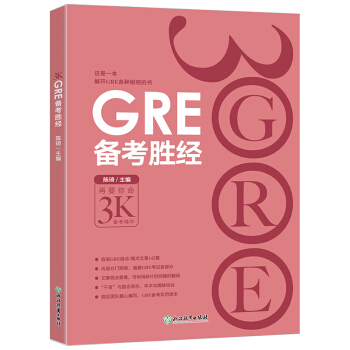

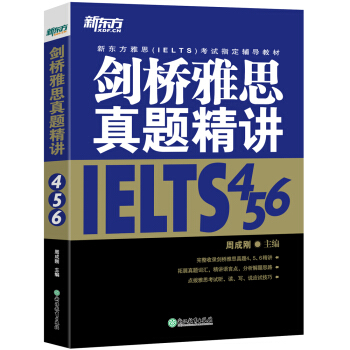
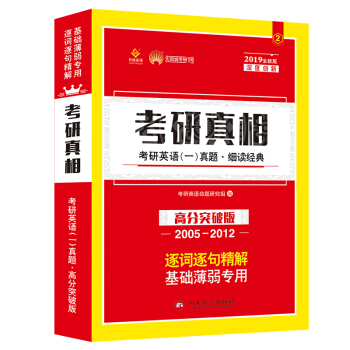

![小王子+動物莊園+老人與海+泰戈爾詩選+瞭不起的蓋茨比 漢英對照 世界名著經典漢英對照套裝(套裝共10冊) [The Little Prince+The Old Man and the Sea+Selected] pdf epub mobi 電子書 下載](https://pic.tinynews.org/12306641/5a94f880N732e2f53.jpg)
